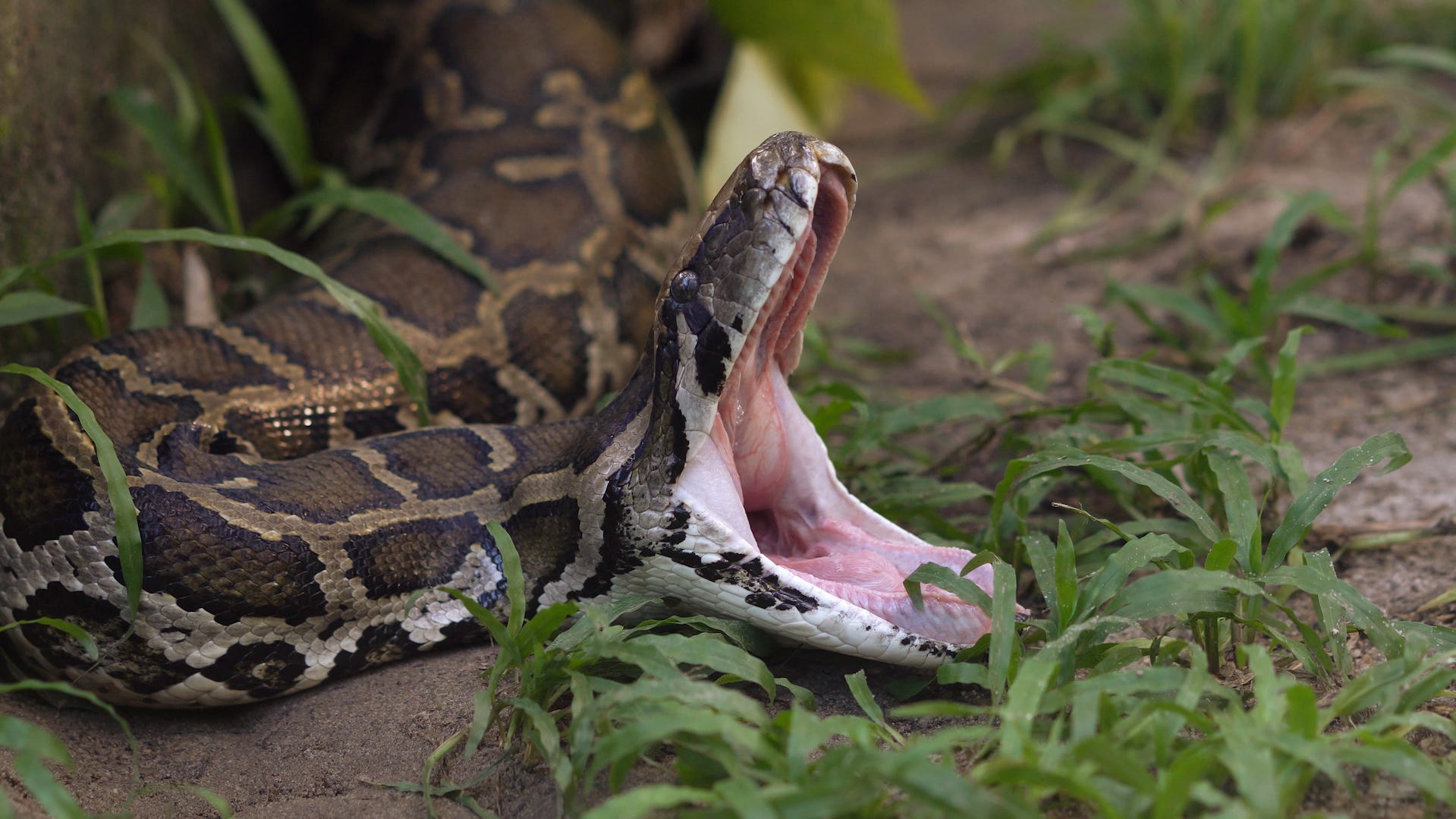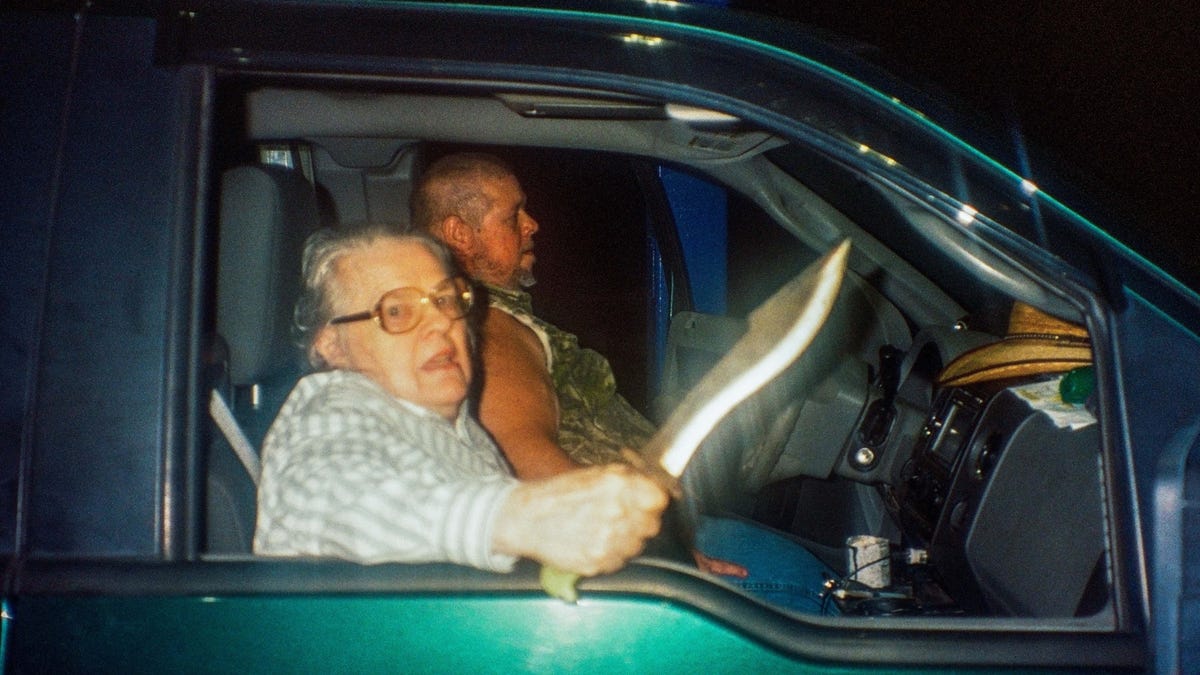
Five things to know about Florida’s Python Challenge
Burmese pythons have a negative impact on native wildlife. Every year you can participate in a contest that helps eliminate the threat.
- Filmmaker Xander Robin’s documentary “The Python Hunt” chronicles the Florida Python Challenge, a 10-day competition to remove invasive Burmese pythons from the Everglades.
- The film follows various amateur snake hunters, including a fifth-generation Floridian and an 82-year-old woman on her “final adventure.”
- Robin describes the filming process as “grueling” but also “fun,” involving nighttime hunts, wading through swamps, and capturing pythons.
- The documentary premiered at South By Southwest and won a Special Jury Prize, and is currently making the film festival circuit.
Xander Robin has been making movies for years. But the director had never filmed anything quite like this: 10 grueling nights hanging out with amateur snake hunters in the Florida Everglades.
The Palm Beach County native admits it got scary, sometimes, when one of those snake hunters jumped out of their truck and plunged into the swamp to capture a Burmese python.
They never knew quite what they’d find at the end of that plunge: It could be a “huge swamp monster,” Robin says. But the smaller ones could be even scarier.
“When it’s a big snake, obviously, it’s crazy exciting,” Robin says. “(But) sometimes the really, really big ones don’t fight quite as much. The ones that are, like, 10 feet are the ones that are a little faster and crazier.”
Robin lived to tell his tale, though. And his resulting documentary, “The Python Hunt,” debuted in March at the South by Southwest film festival in Austin, Texas, where it won the Special Jury Prize. Since then, it’s been making the film-festival circuit, including recent fests in Orlando and Miami.
“The Python Hunt” follows the annual Florida Python Challenge: A 10-day competition where hundreds of snake hunters remove as many invasive pythons as they can from seven lands managed by the Florida Fish and Wildlife Conservation Commission.
Packed with quirky characters, Robin’s movie was shot in the Everglades in 2023, including the Collier County portion of Big Cypress National Preserve.
“We’re kind of doing a character study, an environmental study,” says Robin, who now lives in Broward County. “And it’s also an experiential film about what it’s like to literally be in the Everglades for 10 days for the Python Challenge. So there’s a lot going on.”
The 91-minute film will eventually be released for theater screenings and then home viewing, Robin says. But those dates haven’t been set yet.
The director had lots more to say about the Florida Python Challenge and his documentary. The following interview had been edited for length and readability.
Florida python doc premieres at South By Southwest
The News-Press/Naples Daily News: What was it like premiering the documentary at South by Southwest?
Robin Xander: It was my first experience at South by Southwest. I made some movies before, and I never was able to get into that festival. I’ve been submitting there since I was, like, in high school. It was awesome.
It was cool to bring a movie that’s so Florida to Texas and see what the audience would react to. You know, it was a different feeling of screening it there versus in Florida. People in Florida react like, you know, they’re watching their family.
When and where did you film “The Python Hunt?”
We filmed the majority in 2023. We shot all over. We shot primarily in Dade and Collier. We based a lot of our production out of Everglades City.
So I imagine there are a lot of Collier County people in the documentary?
Yeah, people that were local to Naples. There were a lot of people that came to the Challenge from the Sarasota, Tampa area. One of our main subjects is from Hernando County, Toby Benoit.
Deciding to film the Florida Python Challenge
Tell me how you decided to do this film. I understand it wasn’t your idea. It was a producer’s idea.
I don’t normally do documentaries. My films have elements of documentary in them — how they’re cast or how we shoot them.
I’ve been dedicated to making movies in Florida, and I had a project that basically got into development hell about the reptile trade. That was a script I was writing for years.
And my friend (producer Lance Oppenheim) knew what I was going through. He just mentioned to me: “Hey, are you interested in maybe doing a documentary, a hands-on documentary about the Python Challenge?” Then, a month later, I was like, “I think I am interested in this.”
We went and explored the Python Challenge and met a bunch of people in 2022. And that whole experience confirmed to me there was a movie that I really, really wanted to make.
In the challenge, over 90% of the people in it are amateurs. They’re not affiliated with the government at all. And they’re just figuring it out. And they’re almost, like, aspiring to be these professionals, or they’re aspiring to be Crocodile Dundee. And they come from all over, you know.
And I felt like there was a weird undercurrent of fear sometimes — of people being afraid of doing the wrong thing and getting disqualified or getting in trouble. There was just more to it than it seemed like the news was talking about.
What were those python hunters like?
Our friend Toby Benoit — who was one of the main subjects — he’s, like, a fifth-generation Florida cracker, maybe more. It’s just another hunt for him. He does every type of hunt: Turkey hunting, hog hunting, python hunting.
And he took a giant group out. He’s staying at Everglades City. And the most interesting person that he was taking out was an 82-year-old woman who was trying to go on her final adventure on this python hunt.
She saw it on TV. And she was like, “I want to do that, too. I want to save the native species.” And she had no idea what she was signing up for.
How to catch a Florida python in the Everglades
How do you catch a python, anyway? What are they doing to find and catch them?
All the snakes are nocturnal. Most of the animals in the Everglades are nocturnal. So the easiest way to catch a snake is to go out when no one is around and just keep covering ground really slowly, waiting for one to cross a dirt road — easier to spot that way — and then just grab it by the tail or just grab the head with your hand.
But during the challenge, there’s just so many people around, it becomes more challenging to catch the snakes. Because, you know, if someone’s driving past that road, no snake is going to cross the road.
Some people are pretty good at seeing the snakes periscoping — the snakes periscope up.
Sticking their heads out of the water?
Out of the water, or out of the grass, out of the bush. And the bottom of the belly of the snake is white. And it kind of glistens a little bit if you shine over it with a flashlight. And some people see it that way.
And that’s a more challenging way to see it. Versus it just crossing the road.
So you joined the hunt to film “The Python Hunt.” Were you actually hunting yourself, or were you just hanging out with a camera?
I mean, I was trying to hunt. I was looking. But, yeah, I didn’t see anything.
So you didn’t actually catch anything yourself?
No, I saw a bunch of native snakes. I mean, that was the thing. I thought I was going to see a snake on the first night. They make it seem like if you go out in the Everglades, there’s snakes all around, right? There’s hundreds of thousands of pythons. That’s what they say.
And, yeah, maybe there are. But they’re tough to see for most of us.
What it’s like hunting Burmese pythons
What’s it like when you’re out there hunting in the Everglades for snakes?
It’s nighttime.
Are you hip deep in water? Or in a boat?
Usually you’re in a car. You have the window down. Hopefully you have a really good flashlight or a light from the truck, itself. You’re trying to get a good vantage point and you’re riding 5 miles an hour just covering ground on a dirt road, waiting to see something.
And you’re doing it for eight hours. From basically like, 8 or 9 p.m. to who knows. That is really what it is.
What was it like when they finally found a python?
Sometimes it’s underwhelming. Sometimes it’s like, “Oh, that’s just a baby snake.”
And sometimes it happens when you least expect it. There was one moment when one of the subjects was trying to show us a spot that had chameleons. He was like, “Oh, there’s a bunch of chameleons here.”
He turns in and he immediately sees a snake periscoping out of a bush and runs out of the car and grabs it.
And how do they kill the snakes? What did you see?
People prefer to use a knife. Some people use this special bolt gun like the ones used to euthanize hogs. But a lot of people prefer the knife. And some people use a .22 rifle.
Just to shoot it or stab it in the head?
Yeah. (It’s) not something we like to show really (in the documentary). We had to show it once. We thought it was important to have one scene where that happens.
Was it scary hunting pythons?
How scared were you during the Python Challenge?
I mean, you’re out there hunting these huge snakes, you know. It was scary. The few times there was a big snake, it was scary.
Sometimes we followed some very experienced gladesmen that sometimes would do things on the drop of a hat that we weren’t prepared for. Like walking into, wading through swamp water at three in the morning without telling us. And we would just continue to follow them.
There was no one saying, “Hey, by the way, I’m going to get into the water. You should bring your waders with you.” Sometimes we would just follow people and they’d be like, “Oh, I think I see something.” And then we would have to follow them. And my pants and my socks and my shoes are all destroyed.
I think South by Southwest described the movie as “10 grueling nights.” I’m starting to see what they’re talking about.
Yeah, yeah. But it was also very fun. It was amazing having three separate (filming) units out there. So it really felt like we were a big team making a movie.
— To learn more about Xander Robin and “The Python Hunt,” visit xanderrobin.com.
— Charles Runnells is an arts and entertainment reporter for The News-Press and the Naples Daily News. To reach him, call 239-335-0368 (for tickets to shows, call the venue) or email crunnells@gannett.com. Follow or message him on social media: Facebook(@charles.runnells.7), Instagram (@crunnells1) and X (@CharlesRunnells)
